The best way to cook flank steak

Flank steak is like the Rodney Dangerfield of beef cuts — it gets no respect. And yet its reputation is truly unfounded. It isn’t quite as simple to throw on a grill as some more expensive cuts, but when handled properly, it can be one of the most flavorful, cost-effective steaks around. And luckily, that proper handling is not as complicated as some people might think.
Flank steak is a long, lean slab from the belly of the cow. Because of its location, the muscles that make up the flank are well-worked — it makes the meat chewier and tougher, but because of that action and blood flow, it also makes the meat more flavorful. It is easy to counteract a flank’s tough nature if you know what you are doing. With a bit of salting, quick cooking and the proper cutting, you can have a tender, delectable steak at a much better price point.
Related: A steakhouse chef shares his top tips for preparing steak on the grill, in a pan and more.
Buy the right cut and salt it well
Start by buying a flank steak from a trusted source that has deep red coloring and a small amount of fat along the muscle lines. It also helps to try to find a flank steak that is as evenly sized as possible, so you don’t have significantly thicker parts that cook at different times. The average flank steak should be around two pounds.
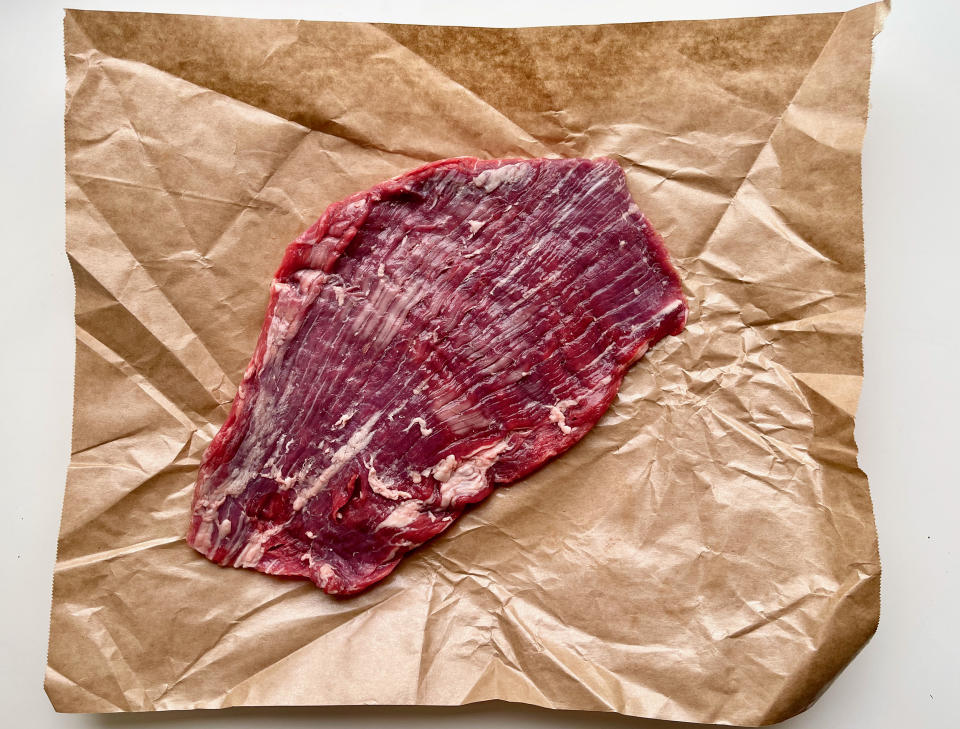
Flank steak is naturally tougher than other steaks so it does require a bit of forward planning — but luckily that forward planning can be as little as an hour, rather than the time-consuming marinades that many believe is necessary.
The fallacy of marinades is that anything beyond the salt does not actually penetrate deep into the meat. Sugars and spices have too large of molecules to go beyond the small cracks in the surface. So, no matter how long your steak is sitting in a beautifully prepared marinade, the flavors will not do much more than they would if you poured them on top after cooking. The real secret is in the salt.
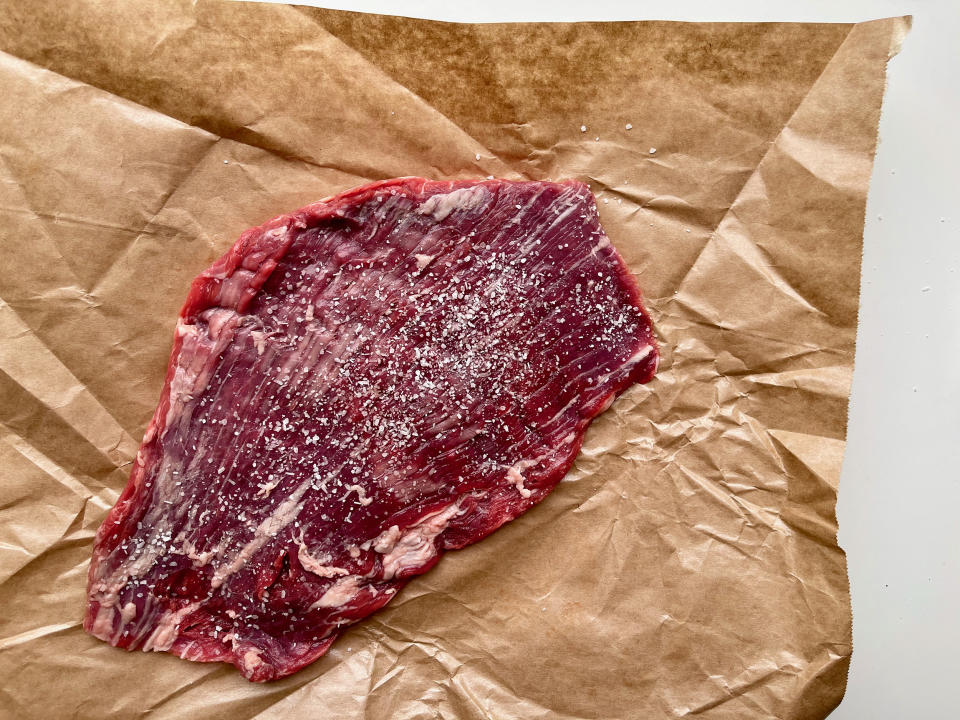
Salt actually can alter the structure of proteins and muscle fibers, making it particularly useful for cuts of meat with a lot of muscle to be tenderized. That alteration makes the meat more tender and allows it to hang onto more moisture — the two most important elements when dealing with a flank steak.
Depending on what flavors you want to add to your steak, you can either simply dry brine it in salt (about a tablespoon sprinkled on both sides should be plenty) or soak it in a marinade that also has a lot of salt. The salt is the easier of the two, but if you want to use the marinade as a sauce later (after you boil it), it doesn’t hurt to marinate. In either case, you don’t really need much more than an hour, and especially with a marinade that has acids like citrus, you don’t want to go much further than a few hours, because it could actually make the meat tougher.

You also want to start cooking when your meat is at room temperature, so take the meat out of the fridge at least 45 minutes before cooking; if you’re only doing an hour for your brine or marinade, don’t bother sticking it back in the fridge at all.
Cook it hot and fast
When your flank steak is ready to cook, there are a few directions you can take it. Flank steak benefits from high heat because it can overcook quickly. Because it is a cut on the thinner and tougher side, you want to be very careful about temperature.
Grilling is one of the easiest ways to cook this cut of meat and is really the only way to get proper browning on the exterior. Throw the meat on a very hot grill for two to three minutes on each side. If you can check the temperature, try to ensure it only gets up to 125 to 130 F (rare to medium rare), so that you don’t make it tougher. If your grill isn’t hot enough don’t be alarmed if the meat isn’t quite as browned on the outside — the key here is to not overcook, which is much more important than the exterior.
Simple Grilled Flank Steak by Ali Rosen
If you have a pan that is large enough, you can cook it on the stovetop, but here is a reason why flank steak is also known as London broil: The easiest method for interior cooking is just to stick it under the broiler.
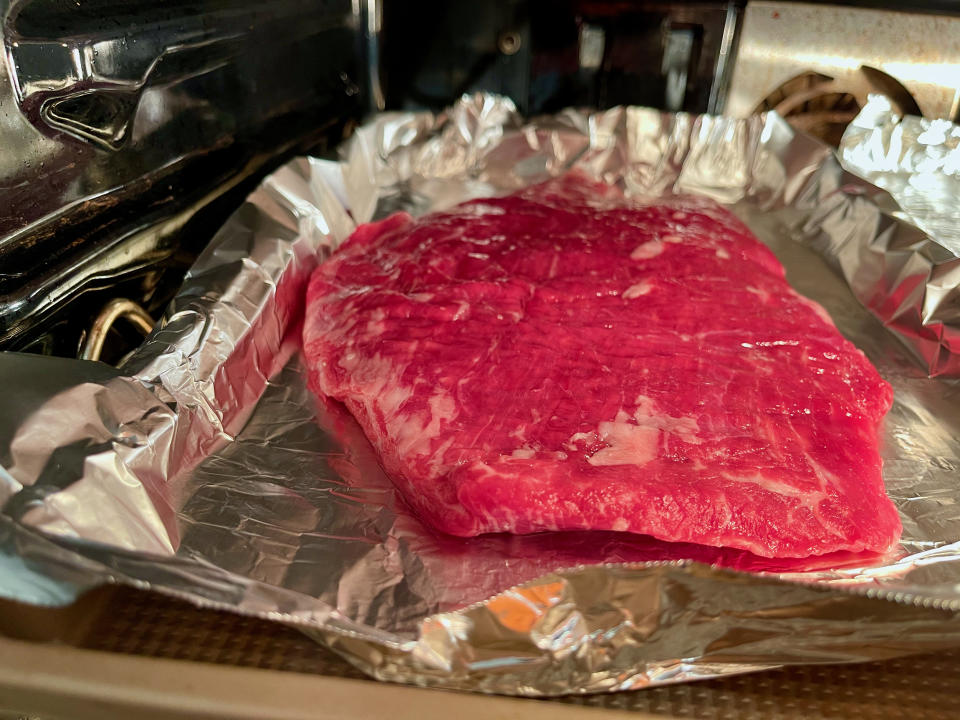
They key to flank steak anywhere other than the grill is to recognize that you won’t get a lot of browning without overcooking the steak. As a result, flank steak is often seen with heavy sauces on top. For the broiler method, place your steak on top of a baking sheet lined with aluminum foil. Put it on a rack about four to six inches from the heat source and turn halfway through, about three to four minutes on each side. You should check the temperature halfway through to ensure you don’t overcook — again, the end result for rare or medium rare is between 125 to 130 F.

Let it rest and cut it properly
One of the most crucial elements to flank steak is how you carve it. Because of its distinct muscle graining, if you cut it incorrectly, you might be left with much chewier meat.
First, allow the steak to rest for five to 10 minutes. This will seal in the juices and allow the muscles to relax. This is a key element for any steak, but especially important for a cut that is mostly muscle. You can place some aluminum foil over the steak if you are worried about it cooling off.
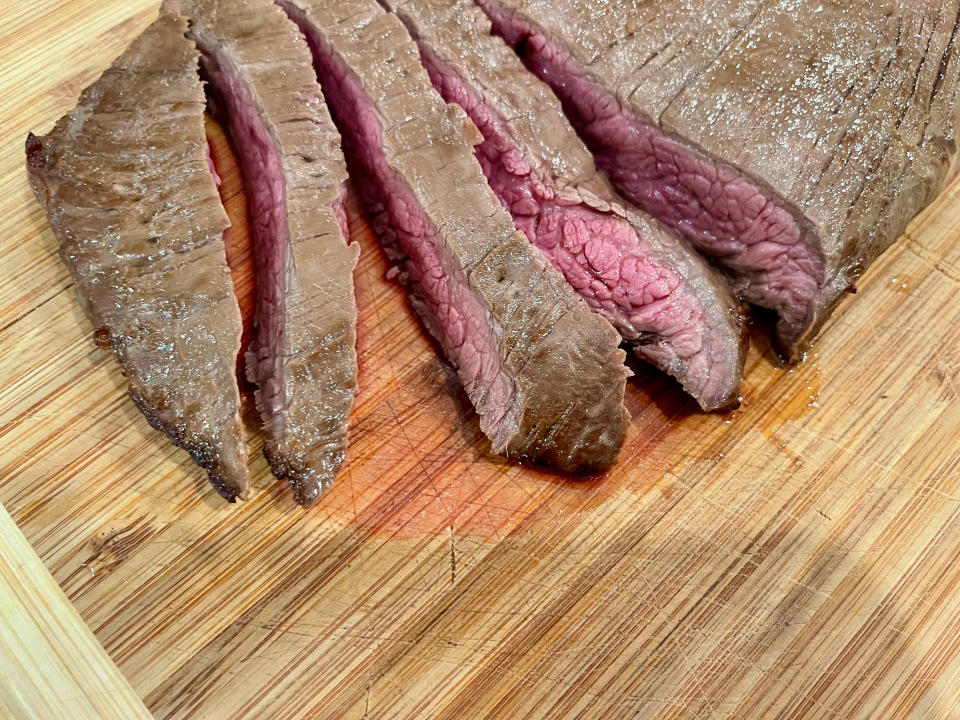
One it has rested, you want to be sure you are using a sharp knife to slice against the grain. What does that mean, exactly? If the grain is the lines that you see on the steak, slicing against it means you will cut perpendicular to those lines. Don’t cut with the lines (as though they are tracing where you should cut) and instead cut straight across them in the opposite direction. This severs those muscle fibers and makes the meat much less chewy.
Add flavor
Flank steak is often used in a range of dishes because its flavor can stand up to heavy sauces. This is why you’ll often see flank steak in fajitas, bulgogi or served with chimichurri.
If you did use a marinade, you can always boil the marinade for at least five minutes to make it into a sauce. The boiling is key so that you eliminate any pathogens that came from the raw meat.
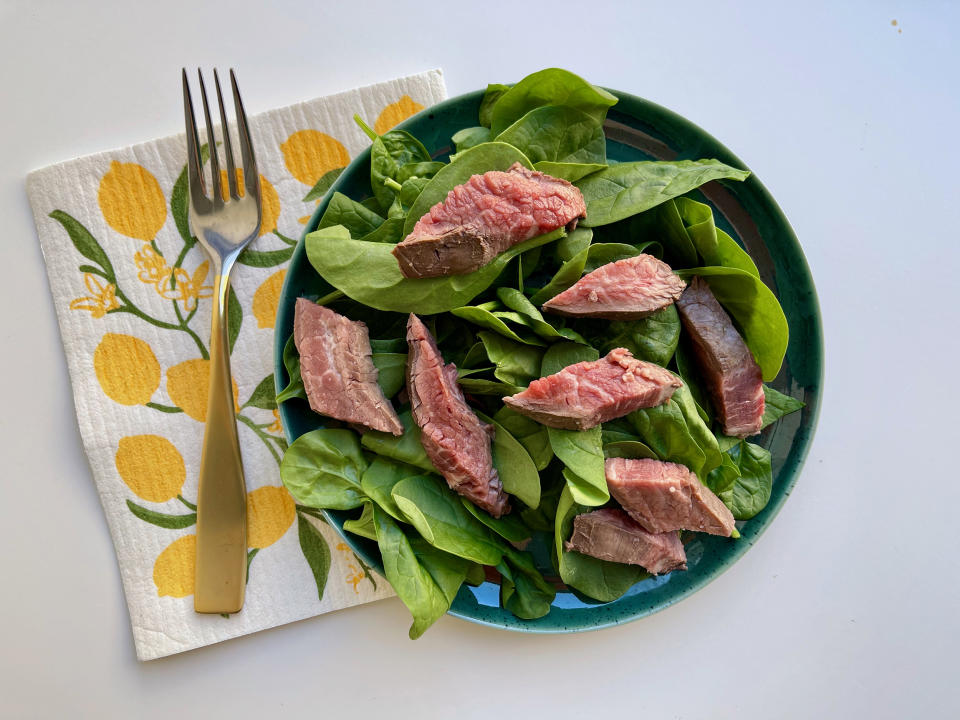
Serve it hot with the marinade on top, or serve it cold on tacos or steak salads. Flank steak is the perfect cut when you want a flavorful sauce combined with one of the most flavorful cuts of beef.
Flank steak recipes
Now that you've mastered the art of cooking flank steak, here are some of our favorite recipes to use it in:
Natalie Morales' Easy Grilled Chimichurri Soy Steak by Natalie Morales
Grilled Flank Steak with Jalapeño-Arugula Harissa by Ryan Scott
Grilled Flank Steak with Yakitori Sauce by Devin Hashimoto
Balsamic-Herb Flank Steak by Pamela Salzman
Grilled Flank Steak with Avocado Salsa Verde by Serena Wolf
Flank Steak Shawarma with Garlicky Tahini and Beet Tabbouleh by Aarti Sequeira
Curtis Stone's Korean Steak Tacos by Curtis Stone
Flank Steak with Chimichurri Sauce by Jet Tila

